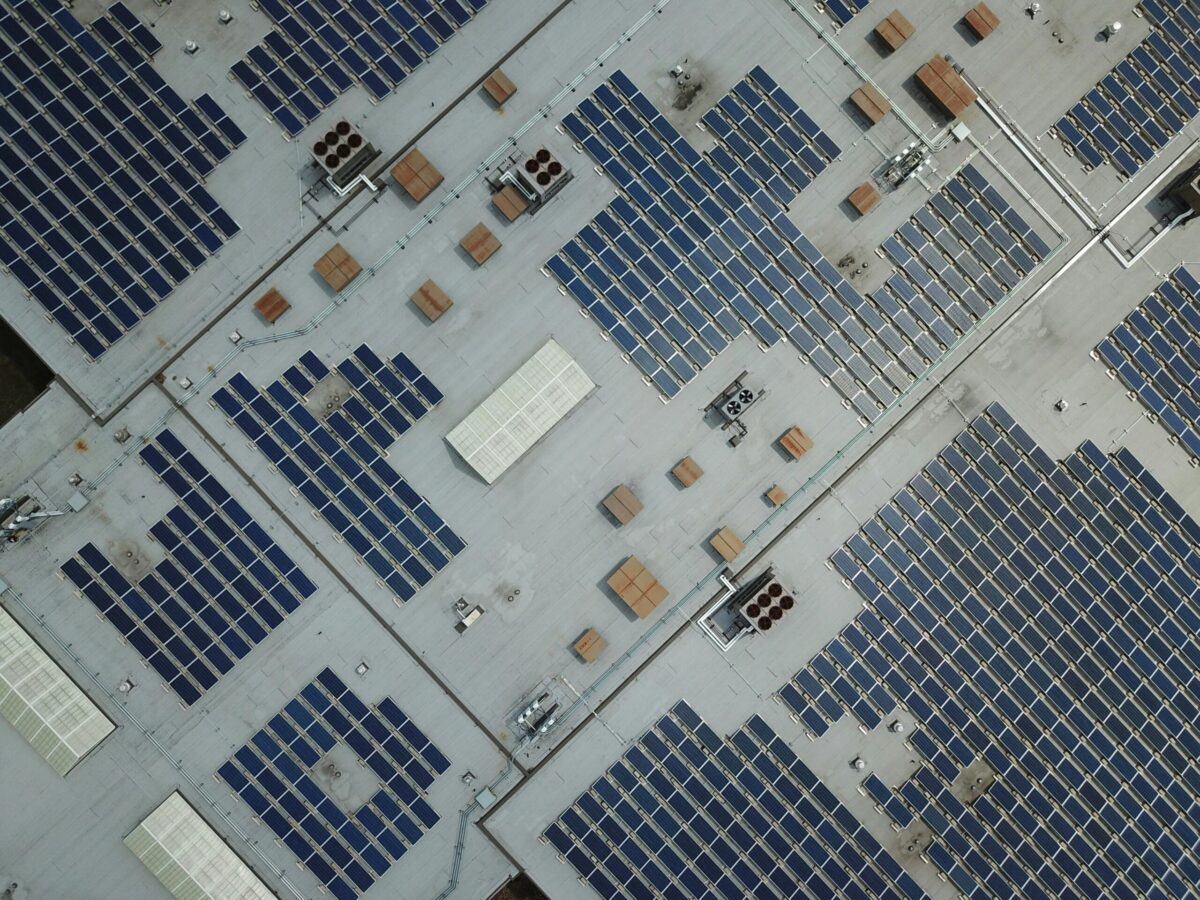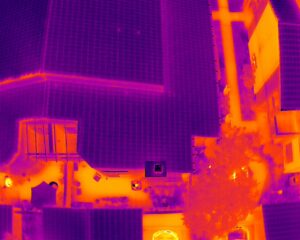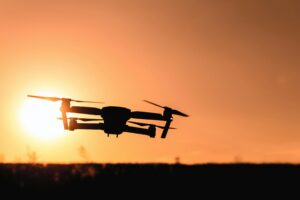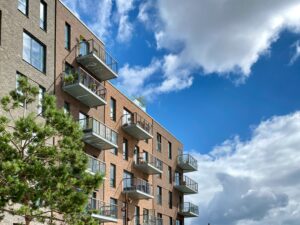If you’re a roofing company, property inspector, or insurance professional, you might be wondering why one might opt for a drone-based thermal roof inspection rather than one performed with a handheld device. A simple handheld unit should suffice, right?
Actually, there are several reasons why drone-based thermography beats handheld thermography for flat roof inspections. In this post, we’ll discuss why you should choose a thermal drone inspection over the alternative—and why you should solicit the help of a qualified aerial thermographer to make sure the inspection is done properly.
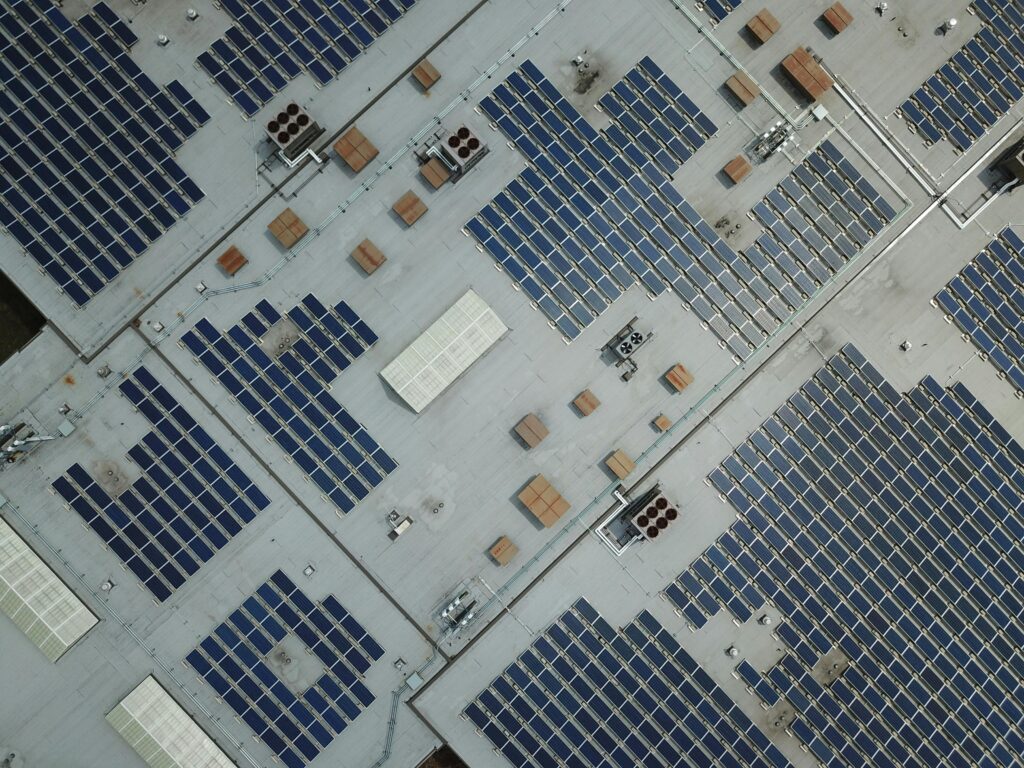
1. Greater Efficiency
First and foremost, when it comes to inspections, drones are always the quicker, more efficient option. Drones can access hard-to-reach areas in a timely manner.
And this is certainly true when it comes to flat roof inspections. Inspecting flat roofs with a handheld thermal sensor requires covering a lot of ground, which in turn requires significantly more time.
Drones, on the other hand, can capture data much more quickly. Take a thermal inspection of a large flat roof, for example.
Going about the inspection with a handheld unit means physically walking the roof in its entirety, a process that can take a significant amount of time. On the other hand, a thermal drone can reduce the inspection time to mere minutes; simply put the drone up, fly to the appropriate altitude, position the sensor as required, and take the necessary photos.
This added efficiency is even more significant when it comes to using a drone’s autonomous capability to capture data from large properties. Take a large multi-building manufacturing plant, for example. Walking the roof to perform a handheld inspection would take several hours at best. But an enterprise-level drone can autonomously fly the entire property and capture the required data in a fraction of the time.
2. Safer Inspections
Drones have made the inspection business significantly safer, and the same goes for thermal roof inspections. There are a couple of ways thermal drones have the edge over handheld units for these inspections in terms of safety.
First, a thermal drone can access areas that a walking thermographer simply can’t. When it comes to commercial flat roofs, there are often all kinds of nooks and crannies that can make physical access treacherous. Thermal drones allow these areas to be accurately inspected from the safety of the ground.
And secondly, it’s important to consider the time of day at which these inspections are performed. If done in accordance with the accepted industry standards, infrared flat roof inspections should be done at night.
This means that a walking thermographer has to traverse a dark roof that might have all sorts of tripping hazards. This can be especially problematic given the height of many commercial roof structures.
So, it’s a no-brainer to opt for a thermal drone inspection if safety is a priority (and it should be).
3. More Accurate Readings
When it comes to thermal flat roof inspections, accurate data is paramount. The reality is that ground-based thermal imaging can lead to erroneous readings when inspecting flat roofs.
In order to inspect a flat roof with a handheld device, the sensor must be pointed generally downward (in accordance with industry standards on viewing/inspection angle).
The problem with this, however, is that due to the proximity of the inspector to the portion of the roof being inspected, it’s likely that the infrared radiation being emitted from the inspector will skew the data being captured on the sensor. In other words, the heat of the inspector’s body will bleed over into the image, thus rendering it less accurate.
And if the inspector angles the device so that their heat won’t skew the image, it means the angle between the sensor and the roof will exceed the allowable angle specified in the widely accepted industry inspection standards. In other words, the data will be inaccurate either way.
Thermal drones completely eliminate the possibility of either of these things happening, as the drone can be positioned far enough away to avoid this infrared crossover, and it allows inspectors the use the appropriate angle for optimal data.
With thermal roof inspections, obtaining accurate data is critical. Major (and expensive) decisions will be made based on the data obtained during the inspection, so it’s important to ensure the process is done right.
4. Better Data Recording/Sharing
And last but certainly not least, thermal drone inspections allow for easier data sharing. Due to the close proximity of the sensor to the roof in the case of a handheld inspection, the scope of the data captured in each photo is supbar. For this reason, it is difficult to compile the recorded data in a useful package that is easy for everyone at the office to understand.
With a thermal drone, on the other hand, a much larger portion of the roof (or the entire roof) can be captured in a given photo. Couple that with the ability to create a 2D thermal map, and this ultimately makes for a more comprehensive, easier-to-understand report that can be shared with all parties involved in the process.
Take a look at how we can provide accurate thermal roof inspections to support your operations.

